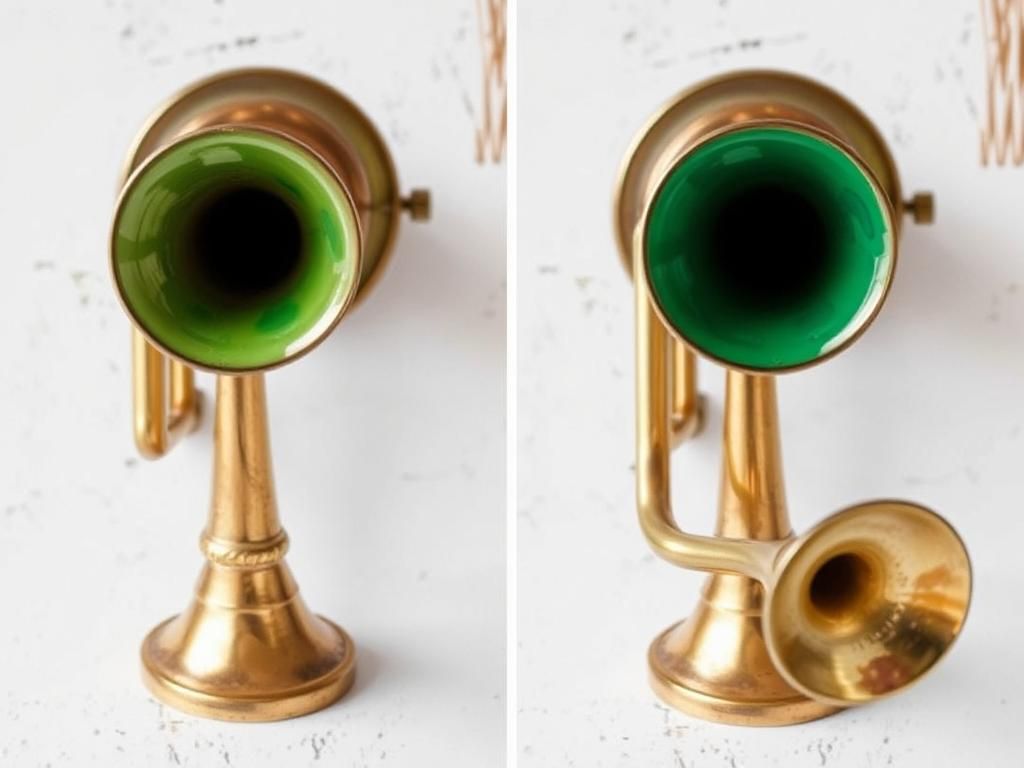Brass, a malleable and durable alloy primarily composed of copper and zinc, is prized for its lustrous appearance and versatility. However, many people often wonder, does brass turn green? This color change is not merely a cosmetic issue; it signals underlying chemical processes that can affect both the aesthetics and maintenance of brass items. From musical instruments and plumbing fixtures to decorative pieces, understanding why and how brass changes color is essential for proper upkeep and preservation.
Understanding Brass
What is Brass?
Brass is an alloy made typically from combining the two main metals: copper and zinc. The proportion of these elements can vary, resulting in different types of brass. The most common varieties include:
– Yellow brass: Primarily composed of 70% copper and 30% zinc, it is commonly used for decorative purposes.
– Red brass: Contains a higher copper percentage (around 85%), often used in plumbing applications.
– Naval brass: Specially formulated for marine environments, this type contains tin for corrosion resistance.
Understanding these compositions is crucial when addressing the question of whether does brass turn green.
Characteristics of Brass
Brass is known for its unique combination of properties, making it a favorite among artisans and builders alike. Some key characteristics include:
– Color: Typically yellow to reddish, brass offers a warm, attractive hue.
– Weight: Heavier than aluminum but lighter than solid copper.
– Malleability: Easy to mold and shape, making it ideal for intricate designs.
Due to these properties, brass is widely used in musical instruments, plumbing fixtures, electrical connections, and ornamental designs.
Causes of Brass Turning Green
The Chemical Reaction
The primary cause of brass turning green is a chemical reaction known as oxidation. When brass is exposed to air and moisture, the copper in the alloy reacts with oxygen and carbon dioxide, leading to the formation of copper carbonate—a green pigment. Several factors play a role in the rate of this oxidation process:
– Humidity: High moisture levels increase oxidation rates.
– Air Exposure: Longer exposure to air accelerates tarnishing.
Additionally, the relationship between climate and oxidation indicates that brass objects in humid coastal regions are more likely to form a green residue compared to those in dry climates.
Formation of Patina
Patina is a protective layer that forms on brass surfaces over time due to the oxidation process. A greenish patina, specifically copper carbonate, is the most recognizable sign of this transformation. Factors that influence the type of patina formed include:
– Environmental Conditions: Saltwater environments can lead to a more accelerated green patina compared to freshwater.
– Time: The aging process affects the thickness and nature of the patina.

Understanding the formation of patina sheds light on the broader question of does brass turn green.
Factors Influencing Brass Discoloration
Environmental Impact
The environment can significantly impact how and when brass turns green. Several key elements include:
1. **Moisture and Temperature**: Increased humidity and fluctuating temperatures create optimal conditions for oxidation.
2. **Pollutants**: Chemicals such as sulfur and chlorine can accelerate corrosion, particularly in urban areas.
3. **Saltwater Exposure**: Marine-grade brass (naval brass) resists corrosion but is still susceptible to tarnishing when regularly exposed to saltwater, which can lead to pronounced green discoloration.
Alloy Composition
Not all brass alloys respond similarly to environmental stressors. For example, red brass with higher copper content will tarnish differently compared to yellow brass. Impurities in the metal or excessive heat treatment can also impact the alloy’s susceptibility to tarnishing, making it essential to choose the right kind of brass based on its intended use.
Coatings and Finishes
Protective coatings such as lacquer or wax can help preserve the original appearance of brass. These coatings create a barrier against air and moisture, significantly reducing the likelihood of tarnishing. Regular maintenance, including inspecting and reapplying these coatings, is crucial in preventing brass from turning green.
How to Prevent Brass from Turning Green
Regular Cleaning and Maintenance
Keeping brass clean is an essential step to prevent discoloration. Recommended cleaning methods include:
– Using mild soap and water to wash brass items.
– Applying a mixture of vinegar and baking soda for stubborn tarnish.
The cleaning frequency should be dictated by usage—high-contact items may require more frequent care.
Protective Measures
Taking proactive protective measures can greatly minimize the risk of tarnishing. Key actions include:
– Applying protective coatings: Regularly checking the condition and reapplying as necessary.
– Proper storage: Keeping brass items in a controlled environment, avoiding high humidity and extreme temperatures, to slow down the oxidation process.

How to Restore Green Brass Items
Cleaning Techniques
If brass items have already turned green, it is vital to restore them gently. Safe cleaning methods include:
– Baking Soda Paste: Mixing baking soda with water to create a paste can effectively remove tarnish without damaging the brass underneath.
– Commercial Cleaners: Choose products specifically designed for brass restoration; always follow the manufacturer’s instructions carefully.
Precautions should include testing on a small, inconspicuous area to ensure no adverse reactions.
Professional Restoration Services
In cases of extensive tarnishing or when dealing with valuable pieces, considering professional restoration services may be advisable. Professional restorers can use specialized techniques to clean and re-coat brass, ensuring that the finish is preserved properly. During the process, expect thorough cleaning and inspection for damages.
Conclusion
In summary, the question does brass turn green encompasses various factors, from chemical reactions to environmental influences. Understanding these elements can help brass owners take better care of their valued items. Regular maintenance, informed decisions about coatings, and knowing when to seek professional help can ensure that brass retains its beauty for years to come.
Additional Resources
Recommended Reading
For those interested in learning more about brass care and maintenance, consider exploring books and articles focused on metalworking, as well as online forums for brass enthusiasts. Websites like the [Brass Craft](https://www.brasscraft.com) can offer further insights and maintained discussions regarding brass preservation.
FAQs
1. What causes the green coloration on brass?
The green coloration on brass is primarily due to oxidation when copper reacts with air and moisture.
2. How can I keep my brass looking new?
Regular cleaning and applying protective coatings can help maintain the appearance of brass items.
3. Is it safe to use vinegar on brass?
Yes, vinegar diluted with water can effectively clean brass but should be followed with a thorough rinse and drying.
4. What types of coatings are best for protecting brass?
Lacquer and wax are popular options for creating a protective barrier against tarnishing.
5. Can I restore heavily tarnished brass myself?
Yes, using safe cleaning techniques like baking soda paste can restore tarnished brass, but always test on a small area first.
6. When should I consider professional restoration services?
If the brass item is valuable or extensively tarnished, professional services can ensure proper care and preservation.
7. Does the saltwater environment affect brass differently?
Yes, saltwater can accelerate tarnishing as it influences oxidation more rapidly than freshwater.
Table: Summary of Brass Characteristics and Care Tips
| Characteristic | Description | Care Tip |
|---|---|---|
| Composition | Copper and Zinc | Select appropriate alloy for usage |
| Oxidation | Reacts with air and moisture | Use protective coatings |
| Tarnish Color | Green patina from copper carbonate | Regular cleaning with mild soap |
| Environmental Impact | Humidity and pollutants increase tarnishing | Avoid storage in damp areas |
| Restoration Methods | Baking soda paste and professional services | Test products on small areas first |


